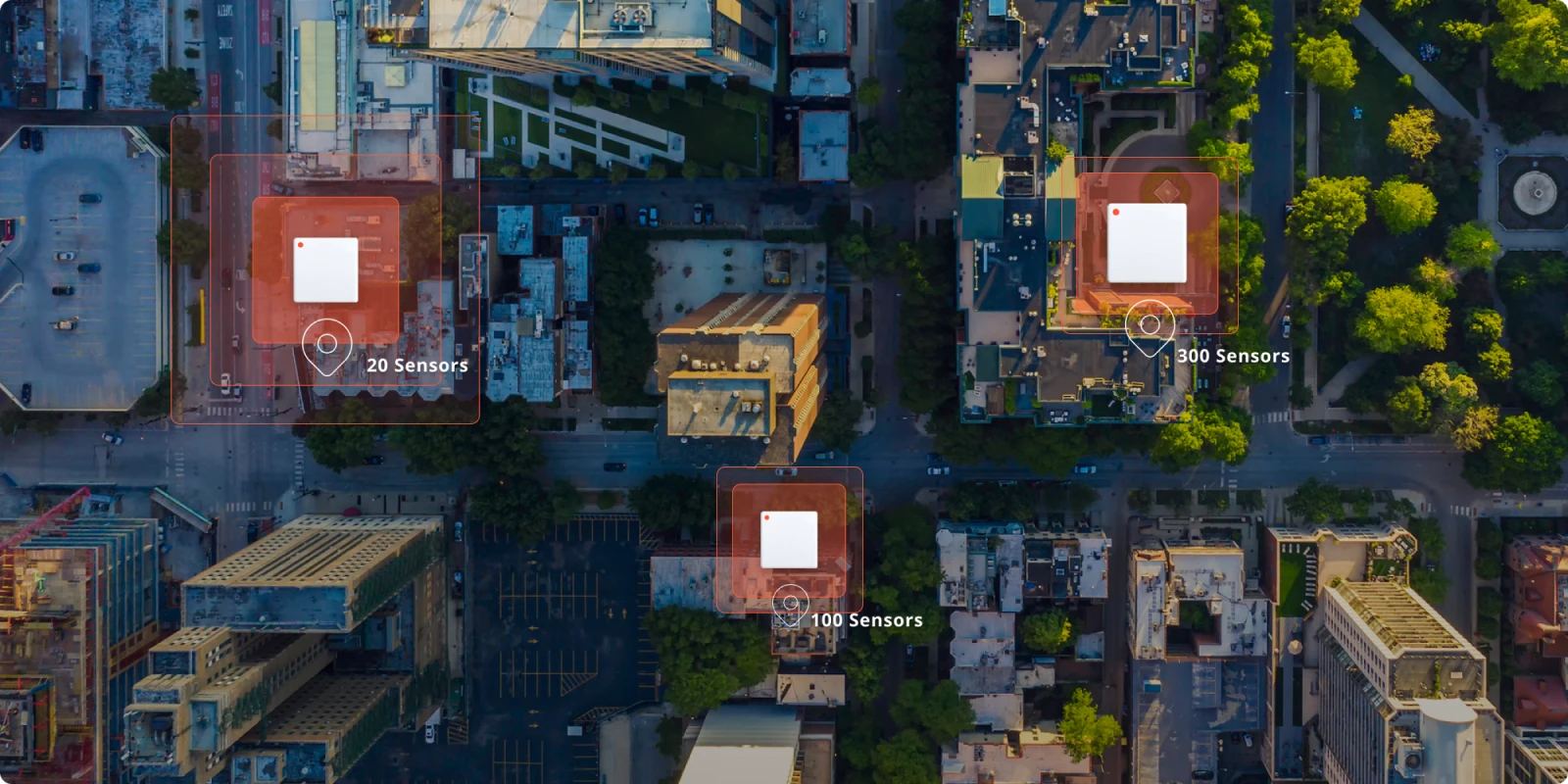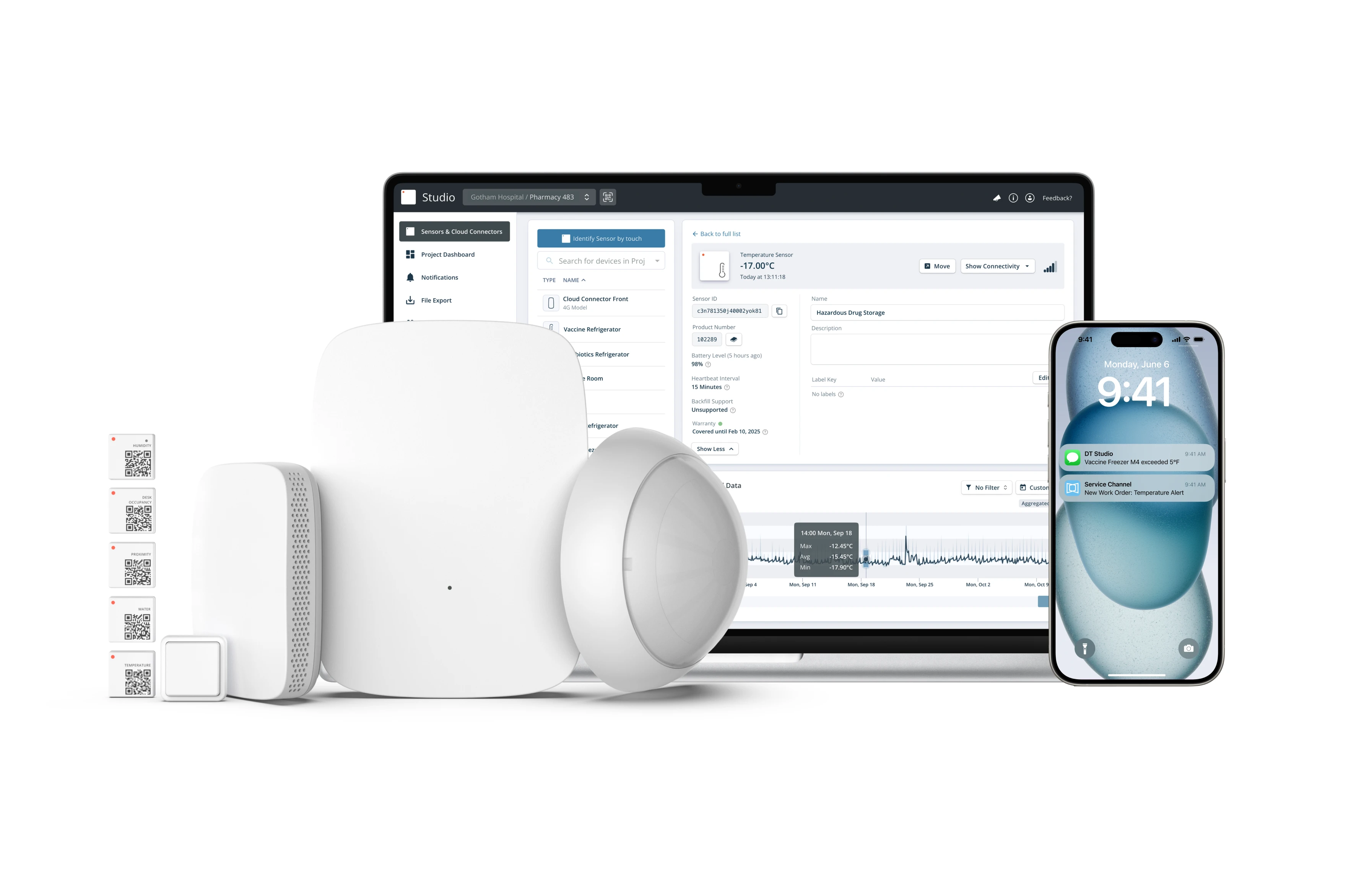Understanding the Trade-offs Between Wireless Sensor Range and Scalability

Wiring even a handful of sensors can be costly, time-consuming, and restrictive. On the other hand, wireless sensors offer a cost-effective and easily scalable alternative. Before deploying a wireless sensor solution, it is important to understand the trade-offs between sensor range and scalability.
The most widely available wireless technologies are WiFi, Bluetooth, and cellular. Other wireless technologies are proprietary networks with some limitations, including being tied to a single vendor for essential system components and having restricted regional support. However, the advantage of proprietary technologies is that they can be specifically tailored to meet different needs rather than being a one-size-fits-all solution.
In this article, we discuss these proprietary technologies as a way to achieve scale.
How Wireless Range Works
When choosing a wireless technology, the wireless range is a key parameter. While it might initially seem that a longer range is always better, the decision is not necessarily that straightforward. Important trade-offs exist as range and scalability pull in opposite directions.
Many factors affect the wireless range. Given the strictly defined rules for radio frequency (RF) emission levels, the main practical parameter available to a system designer that affects range is the data rate, i.e., the speed of communication.
The way radio communication reaches further is to “speak slower.” This makes it possible for the receiver to understand the message at a longer distance, where the signal is weaker. The downside is that it takes a longer time to communicate the information.
How Wireless Range Works In Practice
If you have a long-range system that can cover a building with a single gateway, the system will not be able to scale to more than around 100 sensors in the building.
A sensor solution built for scale will require more gateways but will support the easy deployment of tens of thousands of sensors. This capability is needed to support use cases like temperature monitoring, door/window activity, feedback buttons, etc. Once the infrastructure is established, it is essential that new applications can be integrated without altering or replacing the existing gateways.
Long-range wireless systems are built for applications with few sensors in large areas. However, for use cases such as building automation, where you easily find hundreds and even thousands of sensors in a single building, a higher data rate on sensors is needed to support the number of sensors. The downside is the shorter range, which means more receivers (gateways).
This trade-off is well known. It's why cellular networks have densely packed base stations in urban areas to support numerous devices and high data rates, while in rural areas, they deploy base stations more sparsely, accommodating only low data rates.
Long Range and Spread Spectrum Explained
There is a common misconception that long-range systems, like LoRa, use spread spectrum techniques to achieve high data rates and long-range.
In fact, the spread spectrum itself doesn't "give" a longer range; a longer range is achieved by using low data rates. No matter the technology used, it is physically impossible to have a high data rate and long range.
The relation between data rate and range is defined in signal processing theory, and different techniques are used to come as close to the theoretical limit as possible.
Spread spectrum is a technique to get closer to the theoretical limit for very low data rates. For higher data rate systems, however, spread spectrum has typically limited value, and drawbacks such as excessive bandwidth usage often make it counterproductive.
The technology supports extremely low data rates in long-range systems like Lora, down to as low as 18 bits per second. This naturally gives long-range performance but limits the number of sensors in a large area.
In practical deployments, LoRa cannot support more than approximately 200 sensors in such an area. This limitation will typically not be seen during testing and piloting but will become a critical issue in real-world deployments. As a result, we recommend that you investigate this issue before starting a LoRa implementation.
What Happens If My Network Hits the Scaling Limit?
A communication system can, in many ways, be compared to a transportation system.
Consider a highway with two lanes in each direction. It can handle a lot of cars up to a certain point. When this point is reached, you get congestion, the traffic gets stuck, and very few cars come through.
The same is true for a wireless system. If the radio channel gets congested, very little data will get through. You can always build a new road in parallel. Or, in our analogy, use another RF channel. But if you fail to use the roads efficiently, you will quickly run into congestion issues again.
Since the radio spectrum is shared by everyone, using wireless technology that doesn't utilize the spectrum efficiently can cause issues for that particular technology and others operating on the same spectrum. If traffic is stuck, no one gets through, no matter the type of car they use.
This is why cellular operators invest heavily in radio technologies to improve spectrum efficiency: to allow more wireless devices to share the limited radio spectrum available.
Wireless Protocol Design at Disruptive Technologies
Disruptive Technologies has designed extremely small and energy-efficient sensors, built to scale to billions of sensors.
Due to the very limited energy available in the miniature sensors, the available standard radio technologies (cellular, WiFi, or Bluetooth) were not a direct fit.
Inspired by cellular network technology, Disruptive Technologies has designed a tailored protocol for miniature sensors called Secure Data Shot™ (SDS).
SDS is designed to use extremely short messages, reducing the data rate required. It provides end-to-end encryption and seamless roaming across base stations. The data rate chosen has a range similar to WiFi, as the deployment of WiFi is well-known and highly scalable.
The SDS protocol allows up to one million sensors to operate in a small geographical area. What's more, the protocol is made for highly efficient radio spectrum usage to enable it to share spectrum with other sensor technologies that also operate with fair spectrum usage.

Easy-to-Deploy IoT Sensors & Infrastructure
Get Started



.png)
.png)

